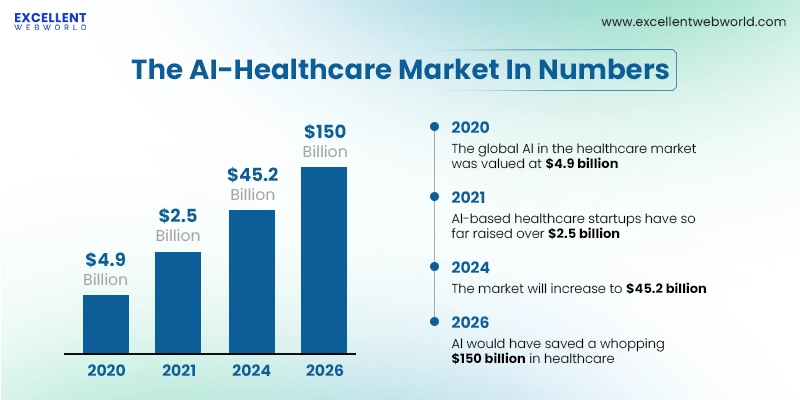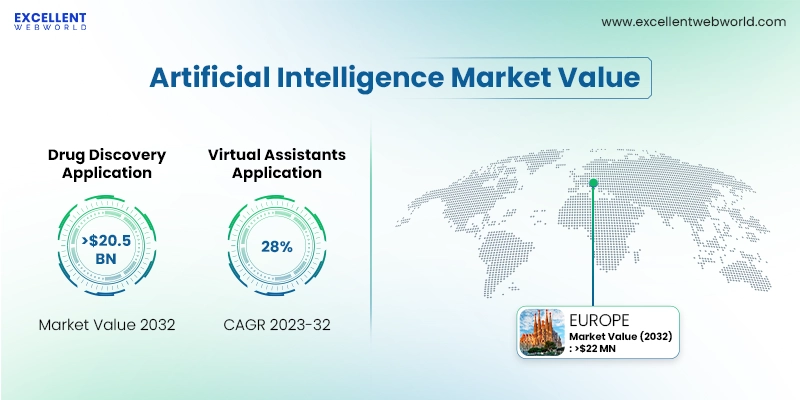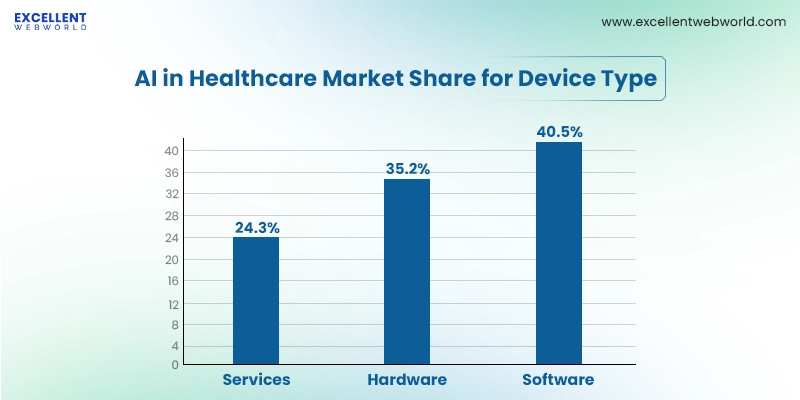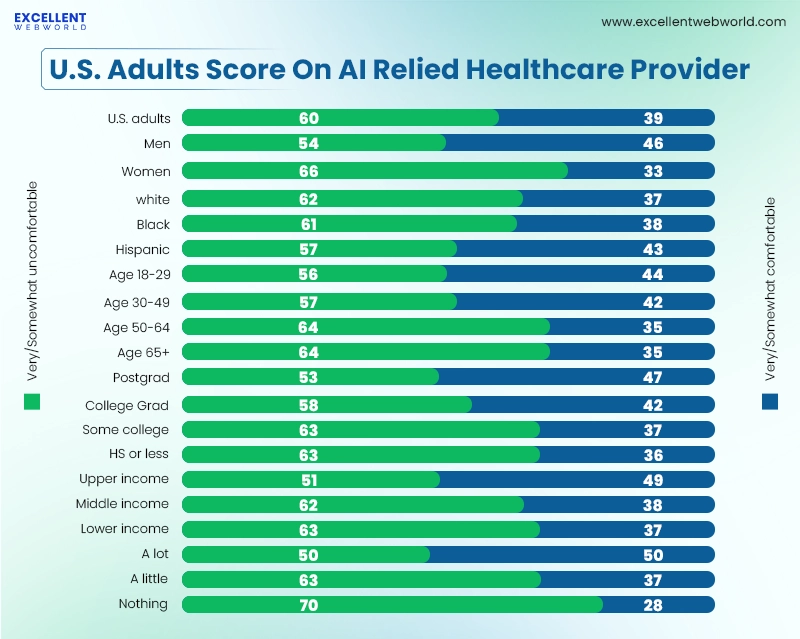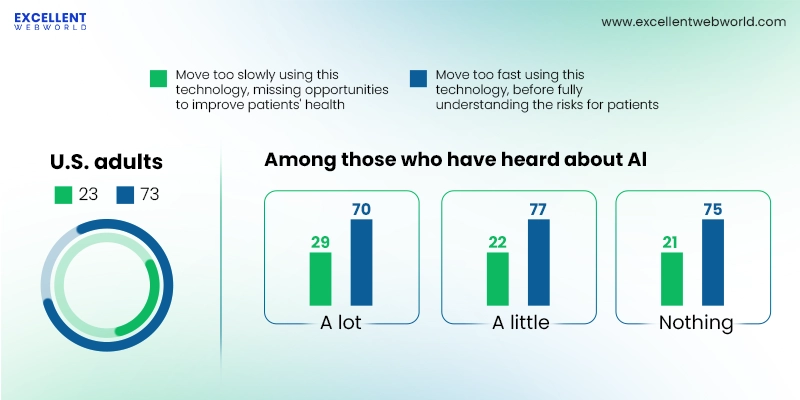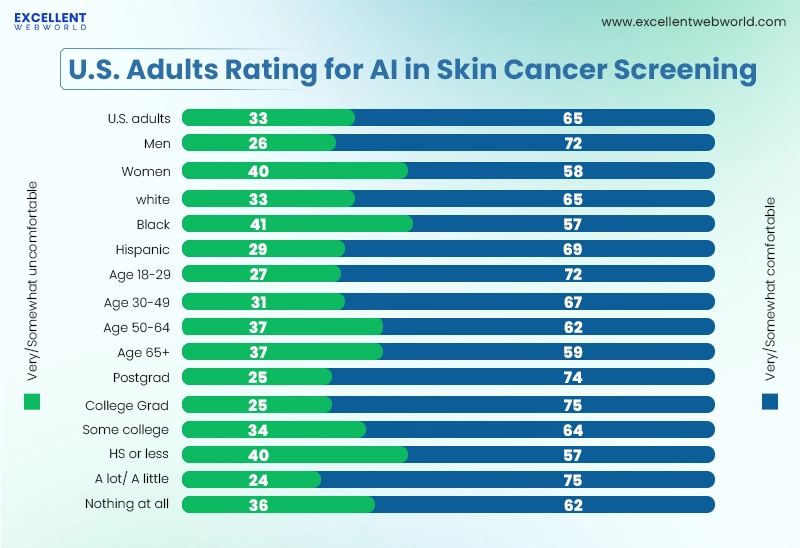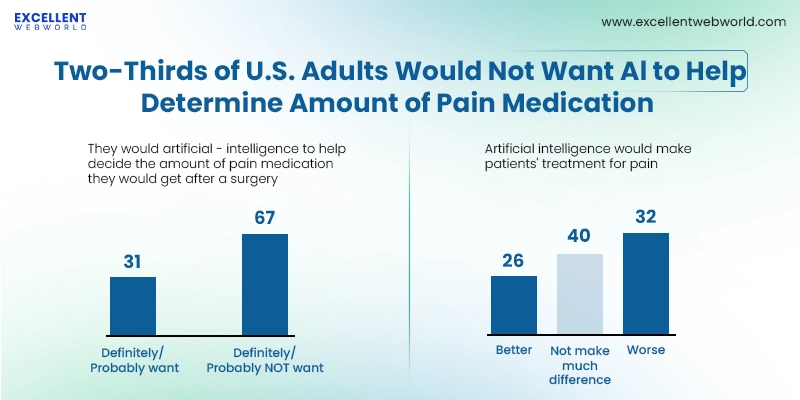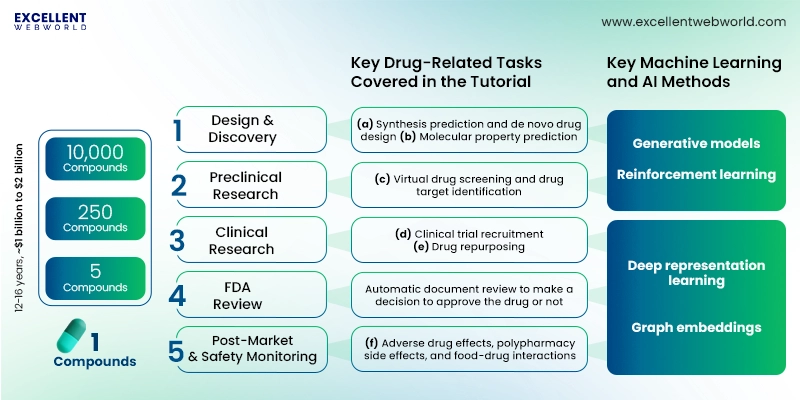
Quick Summery
AI in healthcare statistics makes it clear that the industry is changing in a big way. Healthcare executives, CTOs, and health tech leaders can no longer afford to ignore it. We have worked directly with leading healthcare organizations to implement AI solutions. From these projects, and industry studies and data, we collected important numbers. These numbers reveal a simple truth: Artificial Intelligence is driving efficiency, cutting costs, and improving clinical workflows across the industry.
Now that we’re halfway through 2025, it’s clear that Artificial Intelligence is gaining supremacy across numerous fields. More importantly, AI has already made a significant impact on the healthcare industry.
We’re living in a time where machines are constantly evolving, helping doctors diagnose crucial diseases, perform surgery, and support healthcare in ways we couldn’t imagine just a few years ago.
In modern healthcare, every patient encounter generates a pile of data, from medical images, and lab results to clinical notes. This data alone is overwhelming for professionals to analyze quickly. AI algorithms step in by quickly identifying patterns and predicting health outcomes. They can even suggest personalized treatment options based on this data.
Now AI Impact is not just limited to AI healthcare chatbots anymore. In 2025, the AI healthcare market is moving beyond simple tools to include areas like clinical decision support, improving diagnostic imaging, automating tasks, and creating personalized medicine.
That’s why we’ve gathered some of the most interesting AI healthcare statistics for you. With these numbers, we’re sure you’ll know how AI is changing the healthcare industry.
AI in Healthcare Market Size and Industry Overview
As we mentioned above, AI has changed many aspects of the healthcare industry. It completely changes our perspective on treatment. As a result, almost every medical organization worldwide is trying to reap the maximum benefits of AI.
Let’s look at some lucrative statistics of AI in healthcare.
Key AI Trends in Healthcare and Revenue Insights
Let’s drill down some of the most important AI trends, facts, and figures that you should know about artificial intelligence in the healthcare industry.
Experience seamless virtual healthcare interactions with our advanced telemedicine app development solutions.
AI in Healthcare Statistics by Patient Acceptance
Okay, we have discussed AI-powered technology in healthcare scenarios based on its revenue, market growth, AI tools, and more. But how many patients are comfortable with the treatment using these technologies?
It is a fact that when it comes to patients or users, accepting new technology for treatments might sound scary. However, there are positive numbers of patients who find cancer treatment using AI technology has worthwhile outcomes.
Let’s catch the numbers of patient data for using power-pack technologies in various diagnoses and treatments.
Artificial Intelligence affects 100% of physicians and other healthcare providers, though out of every 4 patients, 3 are uncomfortable using AI for their treatments.
The wide concern for AI in health and medicine is that it will impact the personal connection between patients and healthcare providers. Approximately 57% say that disease diagnosis and treatment would worsen patient and healthcare-provider interaction.
Check the image below that gives you some figures on AI acceptance by patients.
75% of Americans report that AI implementation in healthcare has already started
We must accept that people already know about technologies like AI, Machine Learning and more. But, 70% of the population is still unsure about receiving it in the regular diagnoses and treatments. Somewhere, they believe that the healthcare sector will move too quickly and will not understand the risks involved in the patient’s life.
Wait, things do not end here.
One of the areas where people find AI to be much useful is skin cancer screening. Approximately 55% of the respondents worldwide think skin cancer screening via AI technology is more accurate than traditional screening. These shifts in patient perception have pushed providers to invest in more reliable app development services in healthcare that align with diagnostic accuracy & clinical usability.
Survey Statistics: 65% of US Adults Prefer AI for Skin Cancer Screening
On average two-thirds of U.S. adults say that they do not want an AI-based pain management system. 31% of Americans say they would want this kind of AI guiding their pain management treatment while two-thirds (67%) say they would not.
AI in Healthcare Statistics by Key Application Areas
AI for Cost Reduction in Healthcare
Artificial intelligence can shift the whole healthcare system from an active to a proactive approach. Algorithms can work with large amounts of data and predict diseases and their potential treatments.
According to one report, over 27% of appointments in the U.S. are canceled by patients. One such cancellation may cost the hospital up to 200 dollars. To address this issue, the Missed Visit Prediction Indicator was invented. This analytical tool calculates the risk of missing an appointment and saves around $150 billion annually.
Consequently, AI and Machine Learning will reduce the cost of the healthcare system by $13 billion by 2025.
AI in Drug Discovery and Development
Developing a new drug is one of the most challenging formulas to invent. It requires a lot of research and accuracy to get the needed results. And that’s the reason why scientists have begun to use AI in drug discovery.
If we use AI and Machine Learning to create new antibiotics quickly, it will be one of the biggest wins in the healthcare industry. Also, AI reduced the cost of inventing the new drug by 70%.
AI in Precision Medicine and Personalized Care
Artificial intelligence-infused AI-medical tools boost research by leveraging interface techniques and advanced computation. This is possible by analyzing vast amounts of patient data, including genetic information, medical history, lifestyle factors, and environmental influences, AI algorithms identify patterns, correlations, and predictive models that guide personalized medical decisions.
Above all, Oncology and Neurology will dominate with the help of AI in precision medicine. In 2023, More than 35% of the precision medicine market’s revenue share came from oncology.
AI in Medical Imaging and Diagnostics
Medical imaging takes the help of a range of technologies to diagnose the human body for various medical conditions.
AI adoption in medical imaging is driven by many aspects like the growing volume and complexity of medical data, increasing demand for early diagnosis of disease, and improvement in healthcare efficiency.
According to a source, the global AI in medical imaging market was valued at approximately $1.5 billion in 2020 and is projected to surpass $8 billion by 2027, with a compound annual growth rate (CAGR) of over 25% during the forecast period.
AI-Enabled Robotics in Surgery and Patient Care
With a 19% share in the robotics market, healthcare is considered the second-largest industry for AI in 2024. AI-enabled robots can help bridge the projected shortfall of 10 million healthcare workers globally by 2030, with AI estimated to meet 20% of unmet clinical demands.
54% of respondents in a PwC survey across Europe, the Middle East, and Africa indicated a willingness to engage with AI and robotics for their healthcare needs.
Key Takeaways from AI in Healthcare Statistics
By examining these numbers, we navigate the ever-evolving landscape of healthcare. It is evident that AI is not just a trend but a transformative force reshaping the industry. The number speaks for itself, showcasing the immense potential of AI in healthcare.
There are some challenges, though the AI-integrated healthcare industry also comes with numerous benefits. As we close this chapter on AI in healthcare, let us remember that behind every statistic lies a story of impact, a narrative of progress, and a vision of a healthier world. Let us continue to embrace AI’s possibilities, pushing boundaries, challenging norms, and shaping a future where technology and compassion intersect to redefine healthcare for generations to come.
AI Integration for Healthcare by Excellent Webworld
Statistics for AI in the healthcare sector are very clear, and we can even observe that the trust of healthcare professionals as well as patients is growing. With the support of specialized AI app development services, healthcare providers like us help you implement AI-enabled healthcare solutions that streamline operations and improve patient care.
Excellent Webworld supports you in overcoming the challenges and obstacles you encounter while integrating AI in your healthcare system. Not only that we have our hands on Generative AI development as well. Get the most unique and advanced featured rich AI integrated healthcare solutions under our professionals.
Let’s get in touch to discuss more about it. Let’s Build Your Digital World Together!

Article By
Mahil Jasani began his career as a developer and progressed to become the COO of Excellent Webworld. He uses his technical experience to tackle any challenge that arises in any department, be it development, management, operations, or finance.

